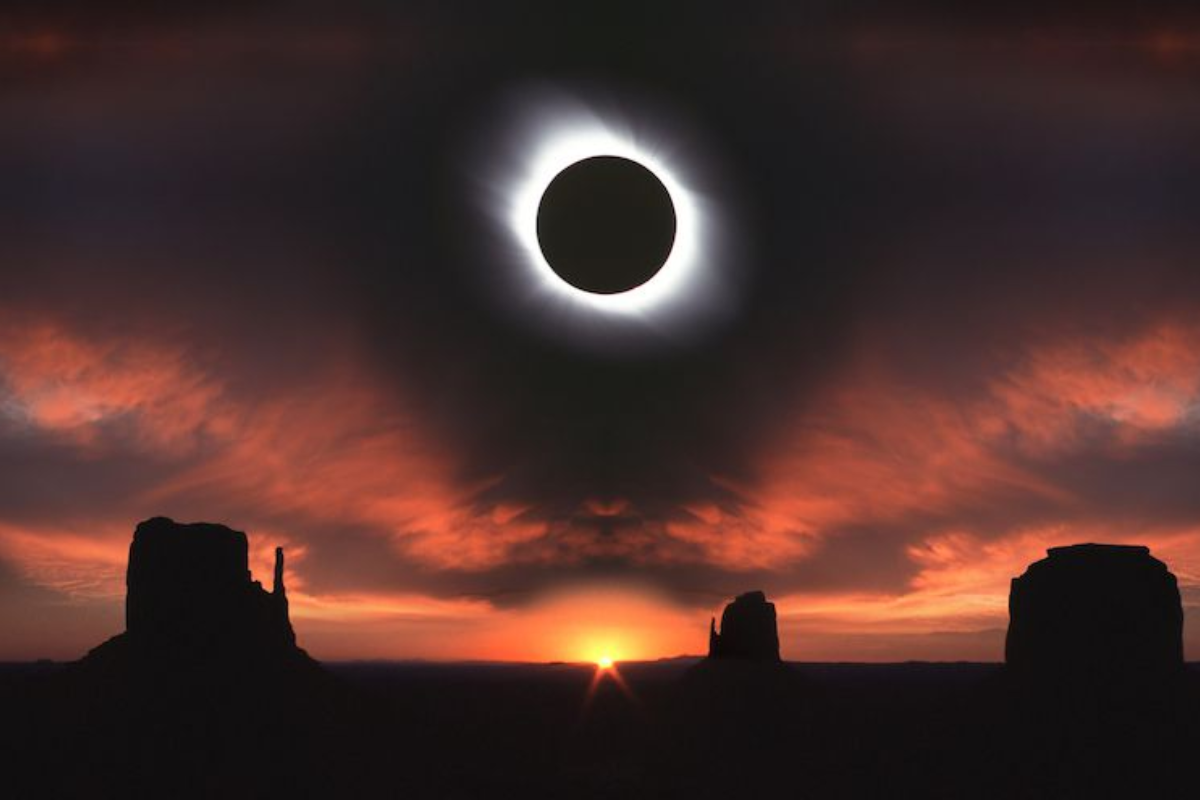
Total Solar Eclipse
Prepare for an extraordinary sight as a rare celestial phenomenon approaches next month: the Total Solar Eclipse of 2024. Set to occur in the second week of April, this eclipse marks the first of its kind for the year, following the Lunar Eclipse witnessed on March 25. Also referred to as Surya Grahan, it promises to captivate observers with its awe-inspiring display.
What is a Total Solar Eclipse?
During a Total Solar Eclipse, the Moon moves between the Sun and Earth, completely obscuring the Sun’s face. This creates a remarkable phenomenon known as the Path of Totality, where the Moon’s shadow fully envelops the Sun. Along this path, viewers witness the sky darken, resembling the transition between dawn and dusk. Weather permitting, observers may also catch a glimpse of the Sun’s Corona, its outer atmosphere typically hidden by the Sun’s brilliance.
Will it be Visible in India? When and Where to Watch?
Scheduled for April 8, the first Solar Eclipse of 2024 will not be visible from India. Instead, it will traverse North America, passing over Mexico, the United States, and Canada. NASA reports that this eclipse marks the last Total Solar Eclipse visible from the contiguous United States until 2044. Commencing over the South Pacific Ocean, the eclipse will coincide with the Moon’s closest proximity to Earth, enhancing the spectacle.
Viewing Locations and Time
If weather permits, the eclipse will first be visible along Mexico’s Pacific coast around 11:07 am PDT. It will then traverse the United States, passing through Texas, Oklahoma, Arkansas, Missouri, Illinois, Kentucky, Indiana, Ohio, Pennsylvania, New York, Vermont, New Hampshire, and Maine. Portions of Tennessee and Michigan will also experience totality, followed by Canada’s Southern Ontario, Quebec, New Brunswick, Prince Edward Island, and Cape Breton.
How to Safely Watch the Solar Eclipse
Viewing a Solar Eclipse without proper protection can be hazardous. Directly looking at the Sun is unsafe, even during an eclipse. Specialized eye protection designed for solar viewing is essential. During the brief period of Totality, viewers may temporarily remove their solar viewing glasses to witness the event. However, caution must be exercised to avoid eye damage.
Also Read: Prosecutors Seek Extension Of Gag Order In Trump Trial Over Alleged Violations
To read more such news, download Bharat Express news apps



















